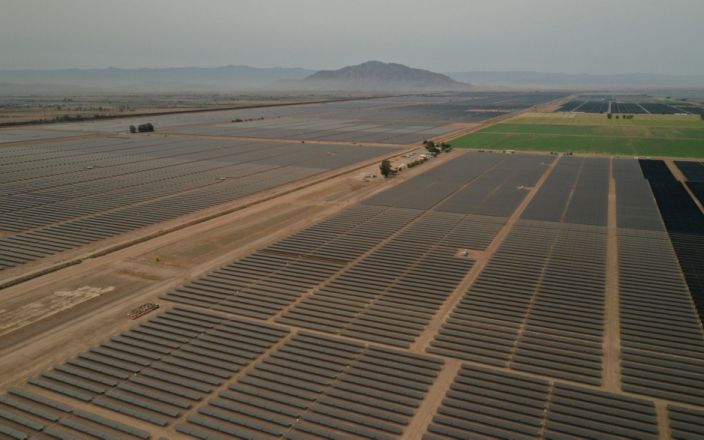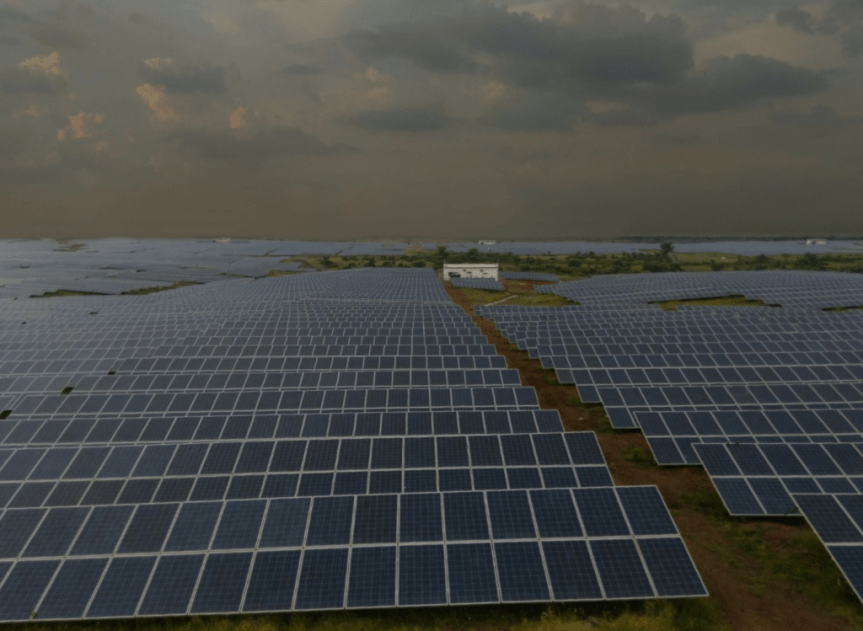Apparently, not every cloud is silver lined, especially when it’s a bank of cumulonimbus stubbornly parked between your solar panels and the Sun.
Since ‘global warming’ was rebadged as ‘climate change’, we’ve been told to expect all sorts of ‘unprecedented’ extremes. Which means there’s a possibility of more calm weather (with unprecedented calmness), which doesn’t augur well for our wind powered future.
Likewise, we’re now being told to expect more heavily clouded skies, no doubt, unprecedented, as well.
If, indeed, our days become cloudier and/or there are more of them, then solar’s occasional contribution to our daily demand for power will plummet to a measly trickle.
What a delicious irony it will be if it’s a changing climate that throws a spanner in the works, and brings our ‘inevitable transition’ to an all wind and sun powered future to a grinding halt.
Olivia Rudgard takes a look at a new source of worry for those bent on running on sunshine, weather and wishes.
Climate change to make solar power less reliable as the sunniest parts of the world become cloudier
The Telegraph
Olivia Rudgard
8 October 8, 2020
Climate change could make solar panels less reliable as it increases cloud cover in the sunniest parts of the world, researchers warn.
While solar in some areas is set to benefit, higher temperatures, humidity and pollution will reduce the reliability of sunlight strength in areas such as the Middle East, where countries have invested heavily in the technology.
Researchers at the University of Princeton examined climate models and concluded that the region was particularly susceptible to the pattern, which could lead to more cloudy days.
In Dubai, which has invested millions in solar power including building a huge solar park and the world’s tallest solar tower, changing winter weather patterns increase by eight per cent the probability that solar panels will fail to meet the demand they are designed by the middle of this century.
This is because higher temperatures lead to greater weather turbulence and hold more moisture, conditions which make cloudiness more likely.
At ground level, heat leads to drier soil creating more dust and pollution, which can also block sunlight.
The country plans to generate 75 per cent of its power from renewable sources by 2050, 25 per cent of which is supposed to come from solar.
Co-author Amilcare Porporato, of Princeton University, said: “In terms of solar power, semiarid places are now like students who get an A nearly every day.
“Now, climate change is disturbing the usual dynamics of the atmosphere and the regularity of the solar radiation reaching the planet’s surface. We tried to quantify how much more often those As could become Bs, or even Cs, as a result.”
A similar wintertime trend can be seen across a swathe of the middle east, south Asia, north-east, central and west Africa.
However, in the summer it’s better news for mainland Europe as climate change means this likelihood decreases by up to four per cent. South-east England also sees a positive summertime effect, though this is less strong.
Scientists said the findings showed that more work was needed to develop efficient power storage and technology to send solar power to the grid more gradually.
The study, published in the journal Nature Climate Change, is the first to examine the potential impacts of a changing climate on the day-to-day reliability of solar technology.
Hotter, drier conditions in some parts of the world also create conditions where out-of-control forest fires are more likely, with smoke blocking sunlight and hampering solar power.
As fires raged across California in the first two weeks of September, solar generation declined 30 per cent from the July average and was 13.4 per cent lower than at the same time last year, despite a rise in capacity.
“This matter reduces the amount of sunlight that reaches solar panels, decreasing solar-powered electricity generation,” the US Energy Information Administration said in a report last month.
Solar’s varying power supply has long been recognised as a challenge among scientists trying to integrate it into existing power grids.
Unlike traditional coal or nuclear power stations, it cannot be switched on to run long-term and produce a reliable source of power. A particular challenge is that demand for electricity tends to peak in the evenings, when solar is no longer available.
Energy storage technology developed to solve this problem has become increasingly popular in recent years as prices come down, though there are still issues with cost, capacity and the relatively short lifespan of batteries.
The Telegraph



I translated and reblogged it
Thank you
Andreas Demmig
Sorry, wrong Name
“………though there are still issues with cost, capacity and the relatively short lifespan of batteries.”
so , everything then really?
There are several problems with PV in semi-arid regions. In the Gulf region it is the mixture of humidity and dust which reduces the sunshine. In addition, dust covers the panels a next reduction of efficiency and the high temperatures which also decrease the efficiency – it is just a physical law.
I guess the efficiency requirements in the Golf countries are different from those in Europe. Anyway it was a nice business selling all this stuff to rich Arabic people.
A national AU beer company TV ad now claims they’re 100% solar powered “So when you’re getting hot the beer’s getting cold” – Care for a fact check?
The average punter believes this stuff like believing in global warming/climate change and political parties knowing what they’re doing to help ALL humanity. It just don’t work that way: Rich countries use capitalism, imperialism and fascism to parasite on poor countries.
Rarely are coups now done by foreign military more often by financing an internal coup or via the World Bank.
Trade Unions negotiate welfare concessions and in return offer to seek nothing else. This guarantees security of the state. Even first world consumption is disguised as Chinese consumption.
Renewable energy subsidy is a variation on the Trans Pacific Partnership; if a transnational company doesn’t get expected profit, it is subsidised by the partnered country.
The Haitian example is that it used to be 100% self sufficient in rice, now after years of interventions, Haiti imports all rice. The money transfer from poor to rich maintains capitalist domination. What has changed, particularly since the beginning of the 1991 west Asian upheaval, is that divide and conquer has become localised with voters still believing there is a difference between western dominated political parties when they are different sides of the same coin with the same intention to maintain the power of dominion.
Everyone knows sun and wind aren’t reliable.
What is reliable is that governments use class, racism and every trick in the book to transfer wealth into the hands of the controlling population. Just 22 men in the world have more wealth than all the women in Africa, or, the richest 1% have more than twice as much as 6.9 billion people. Tax havens hold at least US$32 trillion, that’s more than the value of all the gold dug up. Illicit capital flows through misinvoicing, etc., sees poor countries loosing US$875 billion each year to tax havens.
Renewable energy subsidy is a means of money laundering and ensuring wealth remains in the hands of those supporting the structure.
More than the Industrial Revolution, computerisation has seen a greater number of superfluous to requirements of lower class people. What a handy pandemic that Malthusians have dreamt of for centuries.
Politicians aren’t mad, they’re insanely jealous they can’t be in the top 1%. Corruption is always a top down process while political change is always bottom up.